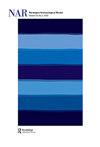‘Stoan Branches Unner a Stoan Sky’
IF 1.1
3区 历史学
0 ARCHAEOLOGY
引用次数: 1
Abstract
Sarah Jackson, Joshua Wright, and Linda Brown’s efforts to ‘countermap the past’ by incorporating ancient Maya perspectives into modern modes of recording and visualizing archaeological excavations are challenging and thought-provoking. Their explorations raise a difficult but fundamental question for any practising archaeologist: How can we use available archaeological methods – from artefact typologies to spatial analyses – and current archaeological evidence – a shifting category in its own right (Wylie 2008) – to generate more expansive and inclusive archaeological interpretations than those currently available? That is, can archaeology be done reflexively, aware of its own biases and blindspots, and recursively, using its own practices to strengthen itself (against, for example, Haber 2012, Gnecco and Hernández 2008, for whom the discipline’s basic subject matter andmethod are inherently colonial)? The general use of Maya property qualifiers in the recording system of Say Kah’s excavation database and the spatial comparisons of their distribution using GIS prompt a reconsideration of themost basic elements of archaeological research. This is both stimulating and necessary. As the authors note, they hope that their work is ‘useful to archaeologists working in other times and places’ and that their ideas ‘are translatable to settings that may not have the same types of ancient textual and iconographic evidence’. Here I draw attention to epistemological and philosophical questions raised by this paper, namely the difficulties of translation (particularly via script rather than speaker) and the challenges of approaching systems of classification that are historically and culturally contingent.“Stoan Branches Unner a Stoan Sky”
莎拉·杰克逊(Sarah Jackson)、乔舒亚·赖特(Joshua Wright)和琳达·布朗(Linda Brown。他们的探索对任何一位执业考古学家来说都提出了一个困难但根本的问题:我们如何利用现有的考古方法——从文物类型学到空间分析——以及当前的考古证据——一个不断变化的类别(Wylie 2008)——来产生比目前更广泛、更包容的考古解释?也就是说,考古学是否可以反射性地进行,意识到自己的偏见和盲点,并递归地使用自己的实践来加强自己(例如,Haber 2012、Gnecco和Hernández 2008,对他们来说,该学科的基本主题和方法本质上是殖民地的)?在Say Kah挖掘数据库的记录系统中,Maya特性限定词的普遍使用以及使用GIS对其分布的空间比较,促使人们重新考虑考古研究的最基本元素。这既刺激又必要。正如作者所指出的,他们希望自己的工作“对在其他时间和地点工作的考古学家有用”,并且他们的想法“可以翻译到可能没有相同类型的古代文本和图像证据的环境中”。在这里,我提请大家注意本文提出的认识论和哲学问题,即翻译的困难(尤其是通过脚本而不是说话者),以及处理历史和文化偶然性的分类系统的挑战。
本文章由计算机程序翻译,如有差异,请以英文原文为准。
求助全文
约1分钟内获得全文
求助全文
来源期刊

Norwegian Archaeological Review
ARCHAEOLOGY-
CiteScore
2.10
自引率
0.00%
发文量
13
期刊介绍:
Norwegian Archaeological Review published since 1968, aims to be an interface between archaeological research in the Nordic countries and global archaeological trends, a meeting ground for current discussion of theoretical and methodical problems on an international scientific level. The main focus is on the European area, but discussions based upon results from other parts of the world are also welcomed. The comments of specialists, along with the author"s reply, are given as an addendum to selected articles. The Journal is also receptive to uninvited opinions and comments on a wider scope of archaeological themes, e.g. articles in Norwegian Archaeological Review or other journals, monographies, conferences.
 求助内容:
求助内容: 应助结果提醒方式:
应助结果提醒方式:


